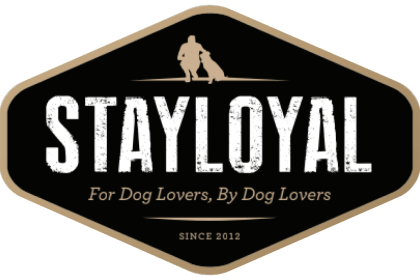Anthropomorphism – What is it and How it Causes Problems for Dog Owners

Do you have dogs instead of kids? Do you consider yourself a pet parent? While these terms are cute and really do not do any harm – the mentality behind them may be the reason why you and your dog don’t have the relationship you want.
A growing trend in society is to equate dogs to humans, specifically kids. And this is where anthropomorphism comes in. What is that big word? It simple means to give human traits – including behaviors, motivations, emotions, characteristics – to non-human objects, animals, or even natural phenomena (“The sky is angry,” says the little girl as lightening crashes down).
Anthropomorphism is a totally natural thing humans do to help us understand things that are different from us and we use it as a way to describe things. The little girl above is just trying to understand what lightning and thunder is all about. Some of us see a splattered painting and the colors on it may induce comments such as, “It looks sad (blues), or angry/passionate/in love (reds).”
But there is a problem when we do this with other living beings. Those living beings actually do have their own set of characteristics and behaviors and they are not the same as ours. To project upon them our own emotions and motivations can have tragic consequences.
“The dog was smiling, I thought it was happy,” says the woman just before she gets bit. The problem is, dogs don’t smile. They do have a submission grin and an aggressive grin (snarl) that can be hard to distinguish between. Or the dog’s mouth may have been open because it was stress panting or about to stress yawn.
Another disservice we do to our canine companions is giving them our emotions. Rampant on social media is the “guilty” dog. “My dog knows what he did – look how guilty is.” However, scientific studies have proven dogs don’t feel guilt.
That look many humans describe as “guilt” is actually your dog being stressed (compare the “guilty dog look” with signs of stress in dogs) or even fearful because track record tells them that when you raise your voice, or come at them hastily, a correction is coming. Your dog can read your mood as soon as you step into the house – too bad we can’t do the same for them.
Another injustice is people teasing or scaring their dogs because we think it’s funny. The problem is, dogs don’t understand humor (they don’t laugh) or that you were “just joking” when you scared her so badly she practically jumped out of her skin.
How does all this affect dogs? Scientists believe anthropomorphism is one of the causes of bad behavior. A study by Topal, Miklosi, and Csanyi showed that owners who anthropomorphize have dogs that are more dependent (including separation anxiety) and have decreased problem-solving abilities.
How to Live Better with Your Dog
The best way to live a peaceful existence with your dog, where you are both happy in your relationship, is to treat your dog like a dog. Learn what science has taught us about canine body language and then use this to assess your dog’s actions. And please, if you are using Google, make sure the information you are reading comes from a reliable study or expert in the subject area – not someone who just loves their dog a lot and thinks they know what their dog is thinking.
What Science Has Told Us About Dogs:
They like routine and structure. This means keeping the rules the same (don’t allow them on the couch one week and then scold them the next week when they jump up), stick with a training method, and make sure everyone in the house follows the rules.
They do feel pain, love, fear, anger, anxiety, and stress. BUT they don’t show it in the same way we do. Learn THEIR signs, don’t assess your dog based on how we humans display these emotions.
Dogs are opportunist. Scientists and behaviorists have learned that dogs are opportunists, meaning they do what works to get them what they want. Dog owners witness this with things like counter surfing. Dog gets on counter once, is rewarded with food, and then does the behavior more and more. This is why positive reinforcement training works. It works with a dog’s natural motivations. Humans work in the same way, technically. But the difference is WHAT we will work for. Your dog doesn’t care in the slightest about sitting and heeling for a blue ribbon or points. And it’s not likely that your dog sits on the couch wondering how he can please you better and comes up with “I know, I’ll sit faster next time!” However, what we have learned is that if the dog is rewarded in a way that has value to that particular dog, he will do the behavior more often. So, if you reward your dog for sitting, he is going to sit more often. So learn what your dog likes and use it as a reward for the behaviors you like!
Just remember to stop and think before you end a sentence such as, “My dog is feeling…,” “my dog thinks…” or “my dog is acting like he’s…” Are you basing the rest of that sentence on scientific fact or are you projecting your human traits on him? You might be surprised at how much you learn about your dog if you start using canine language with him. And you will both be better off.








